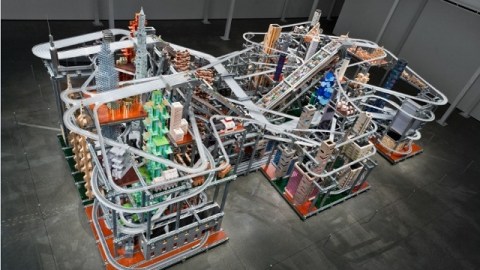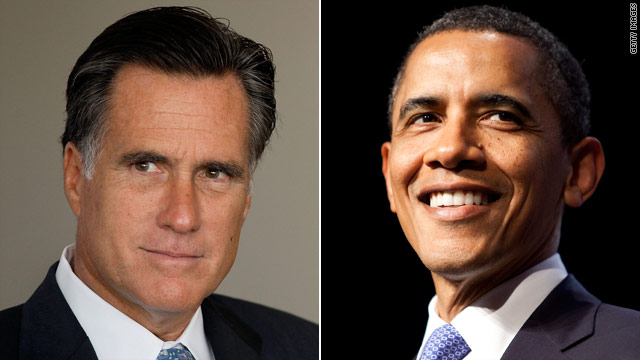Why Is Chris Burden Playing in Traffic Again?

If you know the name of artist Chris Burden, you probably think pain: shooting, electrocution, and even crucifixion. Although Burden ended his agonizing exploits over 35 years ago, those performance art pieces remain his most memorable work. Metropolis II(shown above), a gigantic kinetic sculpture featuring 1,100 custom-made die-cast cars and 13 model train sets racing and stalling in a chaos of traffic now on view at the Los Angeles County Museum of Art, threatens to shoot down the old perceptions and make the art world see Chris Burden anew. But why is Burden, the man who once allowed himself to be nailed to a Volkswagen Beetle, playing in traffic again?
Burden took the genre of performance art to a dark, disturbing place in the first half of the 1970s. As Vietnam wound down anticlimactically and Watergate completed the disillusionment, Burden took on the burden of angst in his art, allowing himself to serve as a sort of scapegoat for the sins of American society. In 1971, the simply titled Shoot involved Burden taking a bullet in his left arm fired by an assistant at medium range. Burden nearly met his maker in 1973’s Doorway to Heaven, in which he intended to be electrocuted but the wiring failed. A year later, Burden laid on a VW Bug as assistants hammered nails into his hands in a piece titled Trans-fixed—a crucifixion on the cross of commercialism.
What connects those performance pieces of the 1970s and Burden’s new sculpture is pain, or at least “tension,” as Burden explains in a film showing Metropolis II in action. Standing beside the sculpture, which is slightly more than 28 feet long, 19 feet deep, and almost 10 feet tall, you quickly realize that this isn’t just some elaborate toy. The hum of the motors as well as the whirring sounds of racing cars (which reach speeds of 240 miles per hour) and chugging trains overwhelms you. As a counterpoint to all that numbing speed, Burden injects that tedious reality of Los Angeles living—numbingly slow traffic jams. For L.A. residents who braved the horrendous traffic of that major city to see the show, those snarled sections of Metropolis II must seem like mirrors of their misery in miniature.
When I heard that the title of the piece was Metropolis II, two associations sprang to my mind. “Metropolis,” of course, may indicate any modern city, but the Roman numeral two forces you to ask which Metropolis it is a sequel to. The pessimist in me immediately thought of Fritz Lang’s 1927 silent film Metropolis, an early sci-fi vision of a human future mired in a dystopian world of exploited workers trapped in a mechanized world. But is that the world Burden wants us to see? If you watch the film, you will hear Burden enthuse over the cars racing at 240 miles per hour—ten times what L.A. resident Burden averages on the real roads. The word “hope” passes his lips, as if some day in the future such speeds will free people from even the memory of interminable traffic jams. Maybe, then, the Metropolis evoked is that fictional home of Superman, the super-powered “Man of Tomorrow.” In that case, the individual witnessing Metropolis II isn’t diminished and destroyed by the scale of the relentless movement surrounding him or her; instead, the individual is elevated—a hero surrounded by the technological wonder of human imagination and harnessing that power for a better, more hopeful tomorrow.
Burden walked away from the pain business in 1975 after a piece he staged in Chicago titled Doomed. In Doomed, Burden rested motionless beneath a slanted sheet of glass near a running clock. He vowed to remain motionless beneath the transparent barrier until someone interfered with the performance. Forty-five hours and ten minutes passed until a museum guard placed a pitcher of water within Burden’s reach. Burden, who had soiled himself in his commitment to the performance, rose, smashed the glass, and then smashed the clock. Burden had tested the parameters of human empathy and compassion and found it lacking, making his pieces placing him in personal danger worthless if nobody cared and nothing changed because of them. Some might look at Metropolis II and come away with the same “Cool, but so what?” feeling that previous Burden kinetic sculptures as 2006’s The Flying Steamroller left many with. (My son already wants a full scale copy of Metropolis II for his sixth birthday.) The fact that Burden spent four years on Metropolis II leads me to believe that it meant a great deal to him, and should mean a great deal to us. The pessimists will see a work in which our doom plays out in tiny cars and trains that represent the steel coffins we spend our finite lives in on our daily commutes. The romantics and optimists (and perhaps Burden belongs to that category now), however, will empathize with those in Metropolis II who face the frustrating roadblocks and soldier on, but they will focus more on the cars flying free at impossible speeds, which allow them to dream and hope. Burden plays in traffic in Metropolis II and tells us to be afraid, yes, but also to enjoy the ride.
[Image:Chris Burden, Metropolis II, 2010. Three 1/2 hp DC motors with motor controllers; 1,100 custom-manufactured die-cast cars; 13 HO-scale train sets with controllers and tracks; steel, aluminum, shielded copper wire, copper sheet, brass, various plastics, assorted woods and manufactured wood products, Legos, Lincoln Logs, Dado Cubes, glass, ceramic and natural stone tiles, acrylic and oil-based paints, rubber, sundry adhesives. Dimensions: 9’9” (H) x 28’3” (W) x 19’2” (D) (297 cm x 862 cm x 584 cm). Courtesy of The Nicolas Berggruen Charitable Foundation. © Chris Burden. Photo © 2012 Museum Associates/LACMA. See a video of Metropolis II in action here.]
[Many thanks to the Los Angeles County Museum of Art for the image above and other press materials related to the exhibition of Chris Burden’s Metropolis II.]





